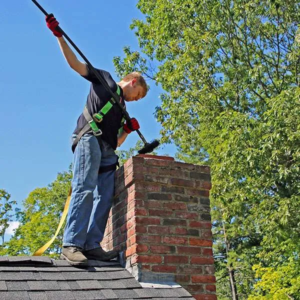Real estate encompasses land and permanent structures affixed to it, including buildings and natural resources. It is distinct from personal property, which includes movable items like vehicles and furniture.
Everything from homes and office buildings to warehouses and strip centers start out as real estate blueprints. Then, development companies, city officials, architects and builders work together to make those blueprints a reality. Contact Cathy Jackson Group now!

Real estate is a physical asset that encompasses land and any permanent structures attached to it. It also includes the minerals and other natural resources present in a piece of land, including water and trees. It sets itself apart from personal property, which refers to movable items that are not permanently attached to the land such as jewelry and furniture. It is also more complex than other assets because it comes bundled with inherent rights. Real estate investors often invest in this asset class to gain steady income and capital appreciation over the long term.
Real property can be classified as residential, commercial, or industrial. Residential real estate primarily includes properties used for housing, such as single-family homes and multifamily apartments. This category also includes rental properties such as condominiums and townhouses.
Commercial real estate, on the other hand, focuses on properties used for business purposes. It can be leased or owned, and it may include office buildings, shopping centers, and strip malls. Commercial real estate can also include warehouses and other facilities used for manufacturing, storage, and distribution.
Vacant or undeveloped land is another type of real estate. It is a less common form of investment, but it can provide good returns over the long term. Investing in this asset class can be risky, and investors should carefully consider the market conditions before making any decisions.
The real estate industry is an important part of the economy, and it offers many opportunities for investors. The sector provides significant income and capital appreciation, while contributing to job creation and a healthy economy. It is also a key component of most portfolios, but understanding the different types of real estate and their characteristics can help you make wise investments.
Real estate investing can be done through direct ownership or through financial instruments such as REITs. These funds offer diversification and professional management, but they are prone to stock market fluctuations and do not provide the same level of control as direct ownership. Another option is crowdfunding, which allows small investors to pool their money to fund real estate projects. This can be a great way to get into the real estate industry without the burden of a down payment.
Types of real estate
The real estate industry encompasses the production, sales and development of properties. It also includes property management and financing activities. In addition, real estate is a major economic driver and is often an investment vehicle for investors. There are many different types of real estate, including residential, commercial, industrial, and raw land. Each of these categories has its own unique characteristics, market dynamics, and investment considerations.
Technically, the term real estate includes any physical property that’s affixed to a piece of land. This is in contrast to personal property, which refers to movable items that are not permanently attached to land. Real property also comes bundled with inherent rights, such as the ability to lease and transfer ownership.
Real estate is divided into several categories based on its use and value. The most common category is residential real estate, which includes properties that are intended for human habitation. These include single-family homes, apartments, and condos. The residential real estate sector is one of the largest sectors in the economy and has a direct impact on job creation, consumer spending, and overall investment levels.
Another type of real estate is the commercial real estate sector, which includes retail malls, office buildings, and other such properties. The commercial real estate sector has a more business-oriented focus and is generally leased to companies rather than being owner-occupied. Finally, the industrial real estate sector consists of properties that are used for manufacturing, warehousing, and assembly.
There are a variety of factors that affect the price of real estate, including its location and the number of amenities. The most important factor, however, is the economy. If the economy is strong, demand for housing will be high and prices will rise. Conversely, if the economy is weak, demand for real estate will be low and prices will fall.
The real estate market is a complex and dynamic one that involves many different players. Real estate businesses are responsible for listing properties, marketing them to potential buyers, and arranging viewings. They also play a key role in educating the public about the real estate market and its various components.
Investing in real estate
Real estate is one of the most popular investment opportunities for many investors. It offers a variety of benefits including rental income, capital appreciation, and leverage opportunities. It is also a good way to diversify your investments and hedge against inflation. However, it is important to understand the different types of real estate and effective investing strategies before making a decision.
There are several ways to invest in real estate, including direct investment and indirect investment. Direct investment involves purchasing physical property to rent out or sell. This can include residential, commercial, or industrial properties. Indirect investment includes investments in shares of REITs (Real Estate Investment Trusts) and crowdfunding platforms. Both methods have advantages and disadvantages, but they can provide excellent returns on your investment.
Investing in real estate can be a lucrative venture, but it’s not without its challenges. For example, real estate can be illiquid and expensive, and it requires active management. Additionally, real estate prices can be volatile, and it’s not always possible to sell a property quickly.
The best way to invest in real estate is to buy a home that you will live in for the long term. This strategy can yield the highest return on your investment, and it can also provide a tax benefit. However, the investment can be risky if you are a first-time buyer, as you will need to pay for maintenance, insurance, and property taxes.
Another way to invest in real estate is to buy and renovate properties for resale. This can be a profitable way to invest, but it can be very time-consuming and expensive. Additionally, you may need to obtain a permit before attempting any major renovations.
You can also invest in land and vacant buildings for future development. This type of investment can be very lucrative, but it’s important to evaluate the area’s market conditions and development costs before making a purchase. It’s also essential to research local zoning laws and regulations before buying land. Investing in land can be an excellent way to build a diverse portfolio of real estate investments.
Buying a home
Buying real estate involves an intricate process, and it’s crucial for homebuyers to know what to expect. Whether you’re looking to buy a single-family home, multi-unit building or commercial property, real estate professionals like real estate agents and brokers are here to help guide you.
A real estate agent can connect you with properties that meet your needs, budget and other specifications. They have extensive local market knowledge and can advise you on pricing trends in the area. Real estate agents can also negotiate on your behalf to get the best price and terms.
You’ll typically finance a real estate purchase through a mortgage, which is secured by the property. Before you start house-hunting, you should have a clear picture of your finances and credit score to avoid any surprises down the line. You’ll also want to consider any special requirements or conditions that may affect your buying power, such as a home inspection, mortgage approval and selling your current home.
Once you’ve found a property that meets your needs, your real estate agent can help you prepare an offer. They will take into account comparable sales and recent transactions in the area to determine a fair price for the property, and they can advise you on any contingencies that need to be included in your offer, such as financing, an appraisal or passing a home inspection.
After you’ve submitted an offer, it’s normal for the seller to make a counteroffer. It’s important to be ready to respond quickly so you don’t miss out on a great opportunity. Once you’ve come to an agreement on a purchase price, it’s typical to include an earnest money deposit of 1 to 2 percent of the purchase amount. This will be held in escrow until closing.
Residential real estate can be an excellent investment for those who want to swap out renting for owning. You can buy a single-family home, condo or multi-unit building and rent it out, which can offset your mortgage payment and potentially turn a profit if the property’s value increases. Investing in residential real estate can also be a safe, secure way to build wealth over time.








